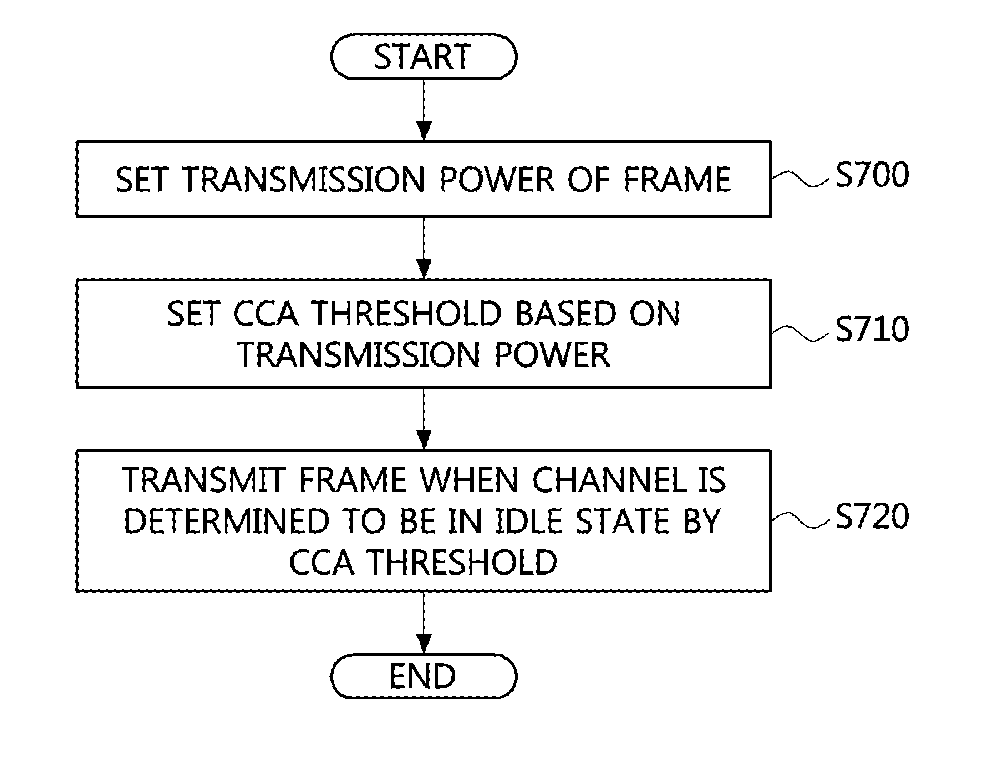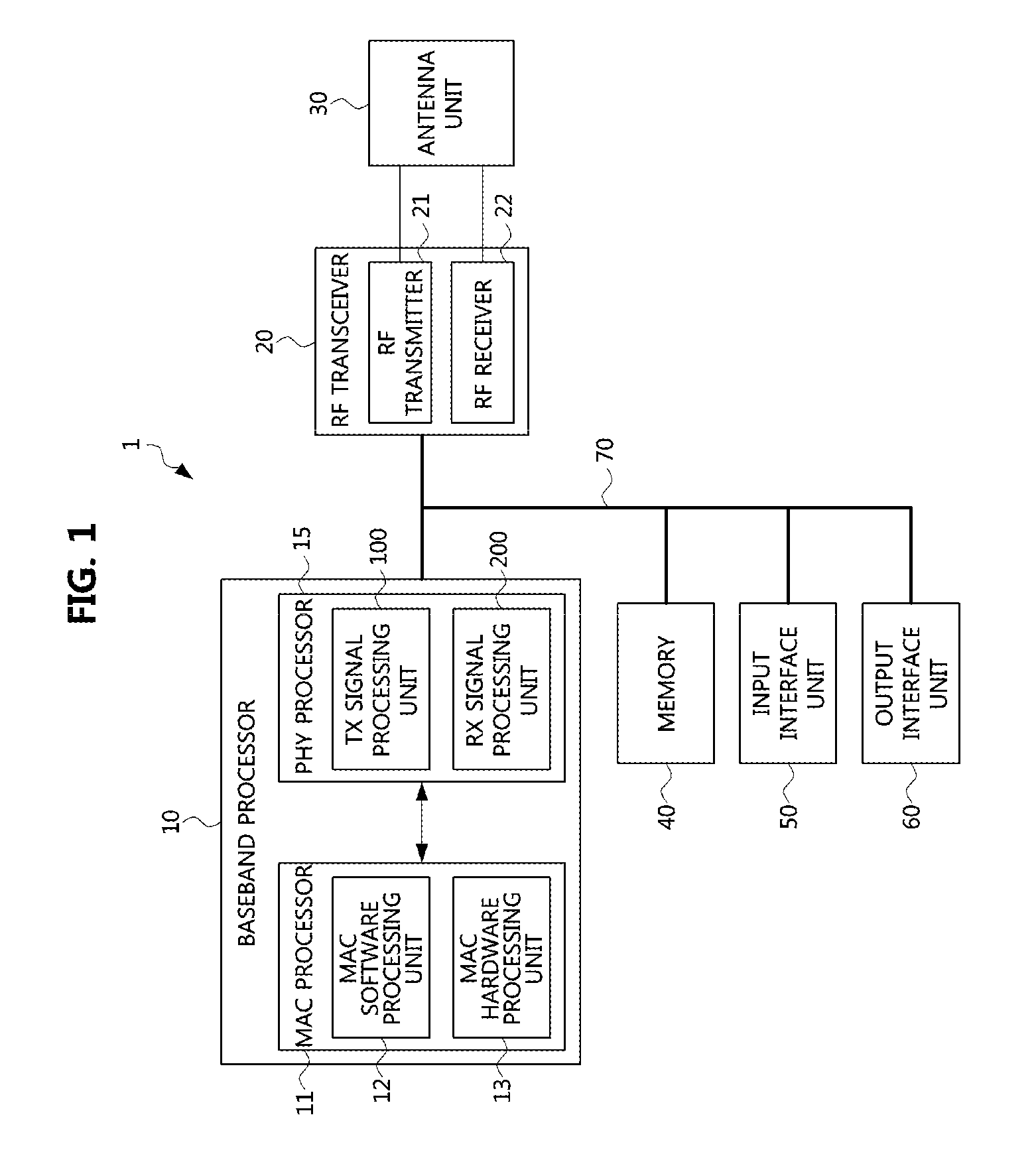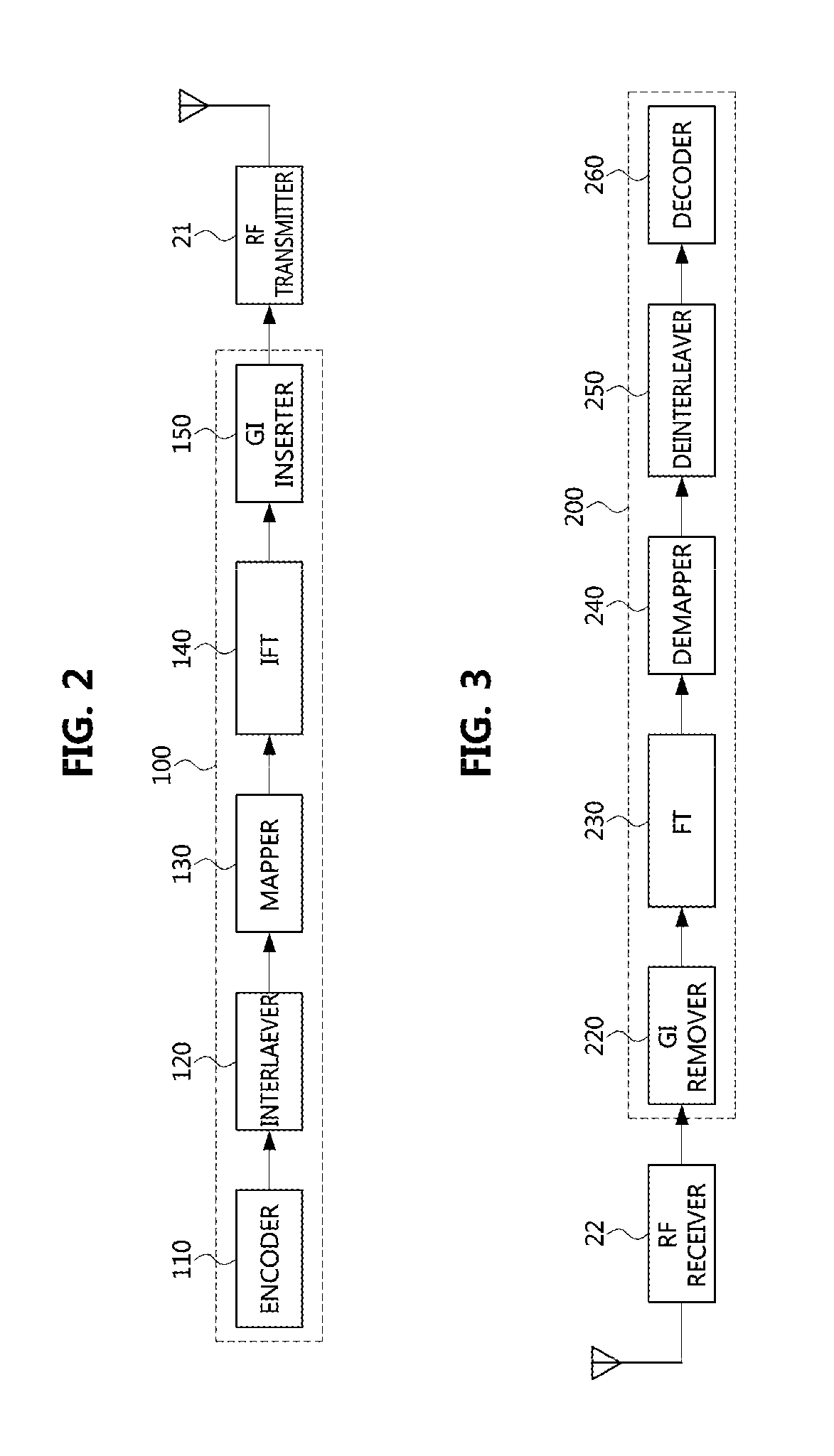Operation method of station in wireless local area network
a wireless local area network and operation method technology, applied in data switching networks, instruments, frequency-division multiplexes, etc., can solve problems such as the inability of second stations to obtain frame transmission opportunities
- Summary
- Abstract
- Description
- Claims
- Application Information
AI Technical Summary
Benefits of technology
Problems solved by technology
Method used
Image
Examples
first embodiment
[0089]FIG. 7 is a flowchart illustrating an operation method of a station that performs a CCA operation based on a dynamic CCA threshold.
[0090]Referring to FIG. 7, when the first station STA1 intends to transmit a frame, the first station STA1 may set transmission power of the frame (S700). The first station STA1 may denote an AP or a non-AP STA. The first station STA1 may set the transmission power of the frame according to a BSS environment. For example, when a BSS to which the first station STA1 belongs is located indoors, the transmission power of the frame may be set to a value less than or equal to a default value (e.g., 23 dBm) of the transmission power. When the BSS to which the first station STA1 belongs is located outdoors, the transmission power of the frame may be set to a value greater than the default value of the transmission power. When the BSS to which the first station STA1 belongs is in a high density state (e.g., a predetermined number or more of stations are loc...
third embodiment
[0097]FIG. 9 is a flowchart illustrating an operation method of a station that performs a CCA operation based on a dynamic CCA threshold, and FIG. 10 is a conceptual diagram illustrating a path loss between stations.
[0098]Referring to FIGS. 9 and 10, when the first station STA1 intends to transmit a frame to the second station STA2, the first station STA1 may measure an interference strength (that, is, a received signal strength) caused by a frame transmitted from another station (S900). Each of the first station STA1 and the second station STA2 may denote an AP or a non-AP STA. The first station STA1 may measure the interference strength by overhearing a frame transmitted from another station. Alternatively, the first station STA1 may receive a frame including interference strength information measured by the second station STA2 from an access point AP to which the second station STA2 or the first station STA1 is associated and may obtain the interference strength information in th...
second embodiment
[0100]When the interference strength satisfies Equation 1 (that is, when the interference strength is in a marginal region), the first station STA1 may set the CCA threshold as a value greater than the interference strength (S920). In this case, the set CCA threshold is less than “transmission power of STA2+path loss between STA1 and STA2.” The first station STA1 may perform a CCA operation on the basis of the set CCA threshold. When a channel is determined to be in an idle state by the CCA operation, the second station STA2 may transmit the frame (S930). Here, the first station STA1 may set the transmission power of the frame on the basis of the CCA threshold described above with reference to FIG. 8 and may transmit the frame to the second station STA2 at the set transmission power. On the contrary, when the interference strength does not satisfy Equation 1 (that is, when the interference strength is greater than or equal to “transmission power of STA2+path loss between STA1 and S...
PUM
 Login to View More
Login to View More Abstract
Description
Claims
Application Information
 Login to View More
Login to View More - R&D
- Intellectual Property
- Life Sciences
- Materials
- Tech Scout
- Unparalleled Data Quality
- Higher Quality Content
- 60% Fewer Hallucinations
Browse by: Latest US Patents, China's latest patents, Technical Efficacy Thesaurus, Application Domain, Technology Topic, Popular Technical Reports.
© 2025 PatSnap. All rights reserved.Legal|Privacy policy|Modern Slavery Act Transparency Statement|Sitemap|About US| Contact US: help@patsnap.com



